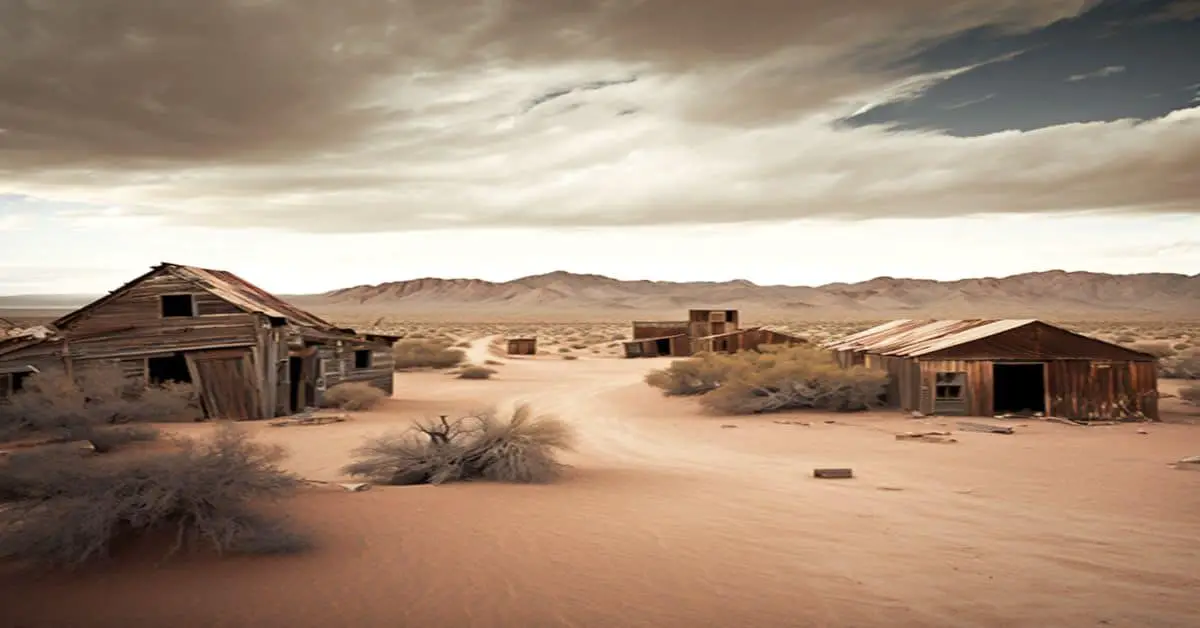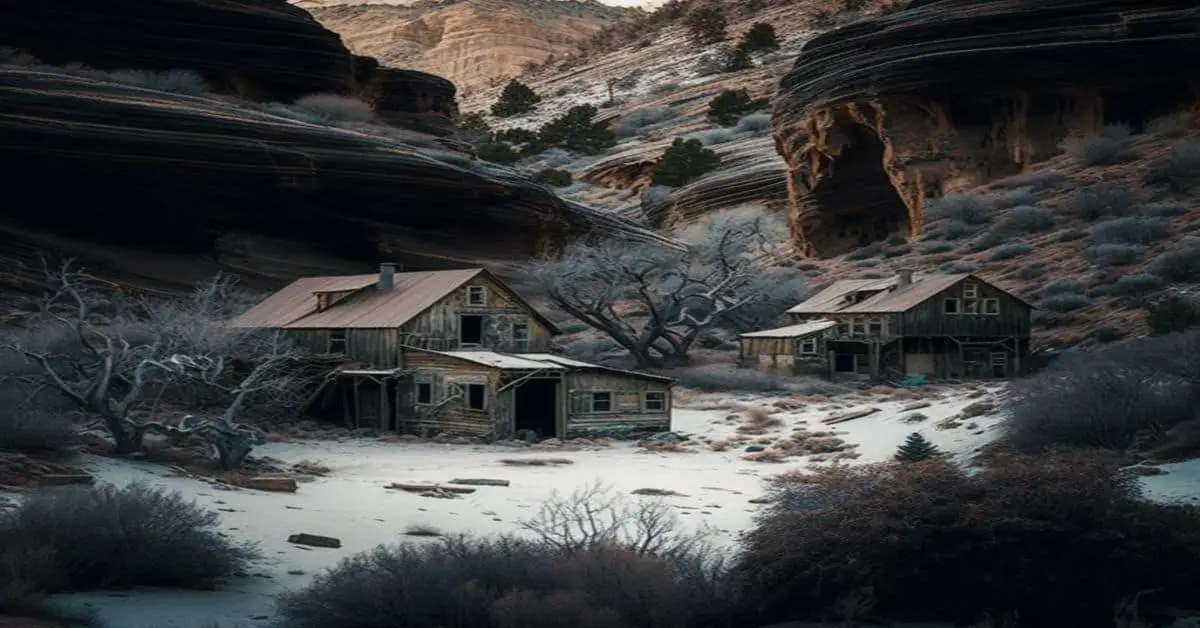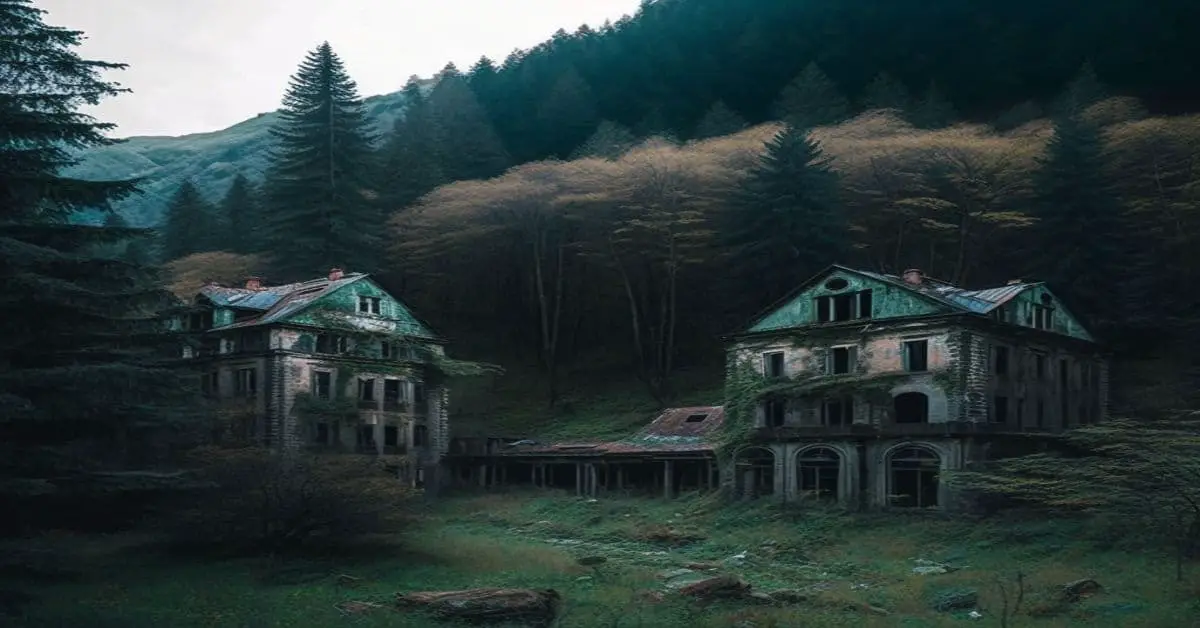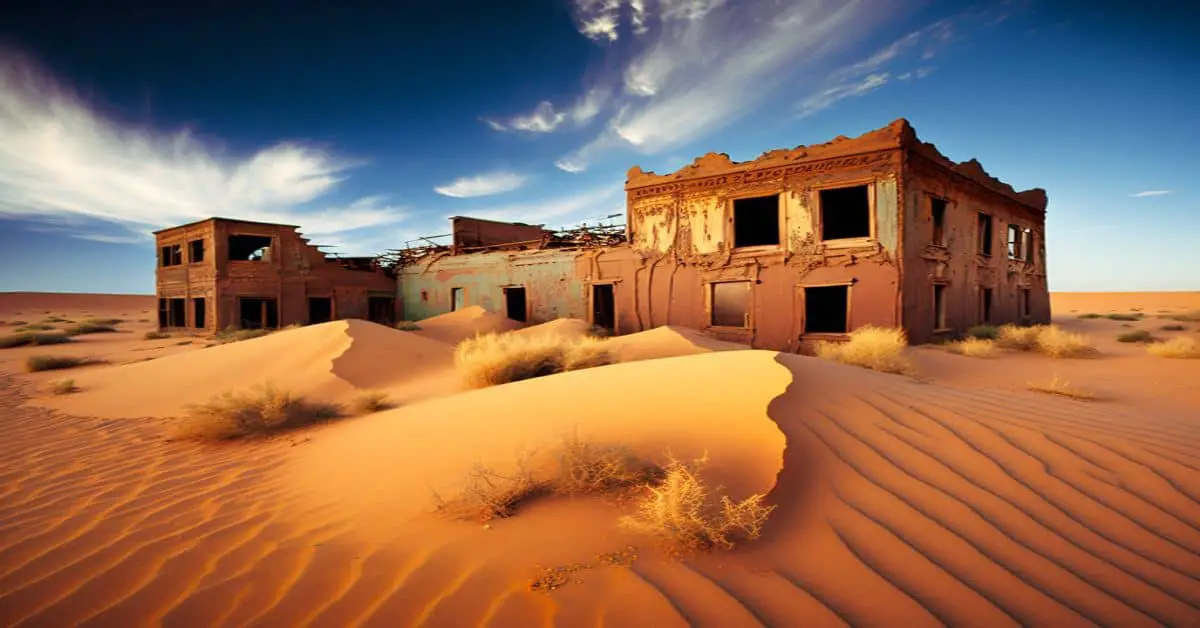Ghost towns in the Mojave Desert are a rare sight but not forgotten. The California desert has been home to some of America’s most faded ghost towns.
A trip out into these deserts can provide an experience like no other. Each location offers something unique while also giving us insight into what life may have looked likes for those who lived there centuries ago at maxing levels before any modern development took place around them.
Calico, California
In 1881 John McBryde discovered a rich vein of silver near Wall Street Canyon. This turned out to be just what he needed to successfully attract many fortune-seekers who started coming to the area in search of wealth.
As soon as the mining boom started in Calico, it was a town full of bustling activity. The mines had names like Bismark and Moscow with Russian origins, while Waterloo is owed to its British roots. Together, these settlements created an atmosphere that teemed with fortune hunters from all over.
In 1892, the silver in Calico was thinning and becoming sparse. The town was mostly deserted as its residents moved to other mining hot spots looking for work and more opportunities.
In 1951, when Walter Knott bought what remained from dilapidated shacks built around his uncle’s fortune, he envisioned something more than just repairing damages done over decades; instead, building up future generations through education about mining heritage while preserving history himself.
What’s left of Calico is a picturesque tourist destination today. You can take an old mining tram through the town and pan for silver while enjoying candy cigarettes that seem like they’re made just as much out of nostalgia as pure sugar!
The Calico Graveyard is a unique attraction for those looking to learn more about the town’s colorful past. If you want something more authentic-looking – go ahead: spend your night under these hills where it seems all history has been waiting patiently to be brought back again by those brave enough to withstand its dangers once more.
Amboy, California
Have you been yearning to explore a post-apocalyptic 1950s kitschy hellscape? Then get your kicks off Route 66 in the ghostly midcentury modern nightmare, Amboy. This small settlement started as another train community three hours east of Los Angeles. Amboy became famous when it was the number one stop for roadside attractions, food, and photo opportunities along the highway.
The iconic Roy’s Motel and Café is a must for anyone who loves Route 66. Opened in the 1930s, it was home to owner Buster Burris “a rough-hewn entrepreneur with flinty eyes, sun-toasted skin, and strong opinions about rowdy bikers or men with long hair.” The little diner served as both a rest stop and a social club. Diners could enjoy their favorite drink or meal by sitting at one of many tables uniquely and authentically decorated.
The abandoned elementary school in Amboy is now a fenced-in ruin that has seen better days. Route 66 passed through its hands, and it fell on hard times when the construction of new highways made this path obsolete.
Amboy was a one-time hot spot for train travelers. The town has an old-west feel with its music and souvenirs on sale at the gas station across from Roy’s Motel. Inside are preserved memories from days gone by.
Kelso, California
The dunes near the Mojave National Preserve are like an endless road, leading you far into its beautifully vacant wastes. The wind pushes your car around as if it were mere sandpaper on your teeth. Suddenly, something appears ahead, a large Spanish Revival structure. That must be how 20th-century passengers felt when they first saw this historic depot in Kelso after finally being able to stretch their legs after days stuck inside train cars traveling across the country.
The steep 2% grade trains had to climb west of Kelso up towards Kessler Summit meant extra ‘helper engines’ would be necessary. Steam locomotives also needed water, which is no surprise they were stationed nearby at this point with access to both sources.
Plenty of natural resources, such as springs, are available to provide water. However, Kelso is a site that had exclusive access to the ones needed to help the trains get from one destination to another.
When the Spanish Revival Kelso Depot and Clubhouse opened in 1924, it became a beacon for hospitality in unforgiving terrain. The expansive structure included “a conductor’s room,” baggage room dormitories to accommodate staff members, and boarding choices that were available during World War II when the population reached around 2,000.
The depot had been a way station for trains since it closed in 1985 due to the dieselization of UP’s fleet and subsequent lack of need at that level by trains climbing steep grades. The once-bustling town became nearly emptied after years without any activity or people living there.
Mojave National Preserve is a place where history lives side-by-side with the present. The restored depot, once again serving as an open-air friendly way station for travelers on their journey through this unforgiving desert landscape, now houses museums detailing what came before and how we’ve changed over time.
The air is heavy with the dust from an abandoned countdown clock, which pounds away as if demanding your attention. The old post office across town has been shuttered for years, and a wood-frame home sits near an abandoned basketball court.
California City, California
Nathan K. Mendelsohn, the man who dreamed up California City in Kern County 100 miles northeast of Los Angeles, was a dapper Czechoslovakian sociologist with an eye for detail and a sharp mind. He planned every little aspect, from how many streets there should be to what type of property should be at every corner, ensuring it conforms to middle-class family housing needs. Mendelsohn also created this perfect grid system which can be seen throughout the town.
The land was purchased to make way for an idealized American metropolis. Mendelsohn would take potential investors to a hill overlooking the property and explain its potential. Once the investors saw how valuable the landscape was, from a city and natural beauty perspective, California City was established. Modern amenities were used to persuade individuals and families to the new town to gain economic gain over other townsites.
When they arrived, the newcomers were greeted with a massive infrastructure campaign in progress. According to the LA Times, the ambitious street system was designed with roads cutting into the brush, making it possible to be seen from high up by airplanes.
A sales office constructed model houses which later became homes for some people who had come here looking forward to better opportunities. A centrally located park was also being started that boasted an outdoor swimming pool among a 20-acre lake and 60 acres of recreational area. This would eventually make California City the third-largest city by landmass, after Los Angeles and San Francisco.
Driving through California City is like stepping back in time. The abandoned buildings and empty streets are a mute reminder of what once was here, but today it’s just another ghost town on the sidequest from LA to Vegas.
Mendelsohn promised so much for this small Mojave Desert community, yet he left behind only promises that never came true. By 1969, when Mendelsohn pulled out amidst lawsuits & investigations over his fraudulent business practices, there were barely 1,700 residents left.
Pioneertown, California
In 1946, a group of Hollywood investors, including cowboy stars Roy Rogers and Gene Autry, decided to buy 13 acres in the high desert 25 miles outside Palm Springs. They called their new home Pioneertown. The town had an Old West setting with false facades that served as both filming location sites for movies or TV shows and to provide visitors access to a unique experience interacting with props of historical figures like Wyatt Earp.
When you drive into town on Highway 95, it’s difficult to imagine that this desert location has ever been home to anything other than sun-baked dirt roads and cattle ranches. But then there are the buildings resembling a small community.
The town is home to modern-day cowboys, who sit on their porches and enjoy an old-timey gesture while wearing the latest fashion from California. You can buy a hat or some beautiful earthenware mugs at stores around this small community. On Main Street, there are cottages built for movies. The post office and the town’s fake sheriff’s office share a building with an aged exterior.



